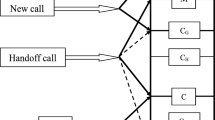Abstract
In order to improve support for higher data rates, third-generation partnership project (3GPP) introduced dual-carrier high-speed downlink packet access (DC-HSDPA), which reaches up to 42-Mbps throughput with the use of two adjacent 5-MHz carriers in Release-8. Defining the dependence of throughput on prevailing channel parameters is crucial because a frequency-selective channel limits achieving these data rates. For this reason, DC-HSDPA throughput real field measurements were taken in different propagation environments by using the “TEMS Investigation” program. The evaluation of the measurements showed that one-parameter linear mapping methods, such as signal-to-interference ratio and channel quality indicator, are insufficient for characterizing user throughput. Therefore, this study will propose a novel mapping method with more than one variable. Although multiple linear regression gives a better normalized root-mean-square error, results have shown that frequently used artificial neural network-based mapping methods—such as those for adaptive network-based fuzzy inference system, multilayer perceptron, and generalized regression neural network (GRNN)—yield improved accuracy. From among these, user throughput can be best estimated with the use of GRNN for a commercial DC-HSDPA system, with approximately 93.3 % precision. The GRNN structure allows system designers to update system parameters to maximize user throughput.









Similar content being viewed by others
Abbreviations
- ACK/NACK:
-
Acknowledgment/not acknowledgment
- ANFIS:
-
Adaptive network-based fuzzy inference system
- ANN:
-
Artificial neural network
- AMC:
-
Adaptive modulation and coding
- BLER:
-
Block error rate
- CPICH Ec/N0 :
-
Common pilot channel energy per chip over total received power spectral density
- CPICH RSCP:
-
Common pilot channel-received signal code power
- CPICH SIR:
-
Common pilot channel—signal to interference ratio
- CQI:
-
Channel quality indicator
- DC-HSDPA:
-
Dual-carrier high-speed downlink packet access
- Ec/Ior :
-
Energy per chip/noise spectral density
- GRNN:
-
Generalized regression neural network
- HARQ:
-
Hybrid automatic repeat request
- HS-DPCCH:
-
High-speed dedicated physical control channel
- HS-DSCH:
-
High-speed downlink shared channel
- HS-PDSCH:
-
High-speed physical downlink shared channel
- HS-SCCH:
-
High-speed synchronization control channel
- LM:
-
Levenberg–Marquardt
- MIMO:
-
Multiple input multiple output
- MLP:
-
Multilayer perceptron
- NRMSE:
-
Normalized root-mean-square error
- SIR:
-
Signal-to-interference ratio
- SNR:
-
Signal-to-noise ratio
- TBS:
-
Transport block size
- TTI:
-
Transmit time interval
- UE:
-
User equipment
- UMTS:
-
Universal mobile telecommunication system
- WCDMA:
-
Wideband code division multiple access
- 3GPP:
-
Third-generation partnership project
References
Holma H, Toskala A (2006) HSDPA/HSUPA for UMTS. Wiley, New York
Dahlman E, Parkvall S, Skold J, Beming P (2008) 3G evolution: HSPA and LTE for mobile broadband, 2nd edn. Academic Press, New York
Caban S, Mehlführer C, Rupp M, Wrulich M (2011) Evaluation of HSDPA and LTE: from testbed measurements to system level performance. Wiley, New York
3GPP TS 25.211 V8.7.0. Release 8 (2010) 3rd generation partnership project; Technical specification group radio access network; Physical channels and mapping of transport channels onto physical channels (FDD), Technical Specification
Johansson K, Bergman J, Gerstenberger D, Blomgren M, Wallen A (2009) Multi-carrier HSDPA evolution, IEEE 69th vehicular technology conference (VTC Spring)
Andrade D M, Klein A, Holma H, Viering I, Liebl G (2009) Performance evaluation on dual-cell HSDPA operation, IEEE 70th vehicular technology conference (VTC Fall)
Zhang D, Vitthaladevuni P K, Mohantary B, Hou J (2010) Performance analysis of dual-carrier HSDPA, IEEE 71th vehicular technology conference (VTC Spring)
Mohan S, Kapoor R, Mohanty B (2011) dual cell HSDPA application performance, IEEE 73rd vehicular technology conference (VTC Spring)
Esenalp M, Kurnaz C (2013) Performance evaluation of dual carrier HSDPA in indoor environment, IEEE 21st signal processing and communications applications, IEEE conference publications
Pierucci L, Romoli A, Fantacci R, Micheli D (2010) An optimized neural network for monitoring key performance indicators in HSDPA, IEEE 21st international symposium on personal indoor and mobile radio communications (PIMRC), pp 2041–2045
Tao C, Feng L, Goteti A, Sethuraman V, Rao SP, Subrahmanya P (2011) Throughput optimization in high speed downlink packet access (HSDPA). IEEE Trans Wireless Commun 10(2):474–483
Tanaka S, Ishii H, Sao T, Iizuka Y, Nakamori T (2005) HSDPA throughput performances using an experimental HSDPA transmission system. NTT DoCoMo Tech. J. 6(4):19–27
Mehlfuhrer C, Caban S, Rupp M (2010) Measurement-based performance evaluation of MIMO HSDPA. IEEE Trans Veh Technol 59(9):4354–4367
Freudenthaler K, Kaltenberger F, Geirhofer S, Paul S, Berkmann J, Wehinger J, Mecklenbräuker CF, Springer A (2005) Throughput analysis for a UMTS high speed downlink packet access LMMSE equalizer, In: Proceedings of IST mobile and wireless communications summit, Dresden, Germany
Harteneck M, Boloorian M, Georgoulis S, Tanner R (2005) Throughput measurements of HSDPA 14 Mbit/s terminal. Electron Lett 41(7):425–427
3GPPTS 25.306 V11.0.0 http://www.3gpp.org/ftp/Specs/html-info/25306.htm
3GPPTS 25.214 V8.9.0. (2010) Third generation partnership project; technical specification group radio access network; physical layer procedures (FDD) (Release 8)
Brown SH (2009) Multiple linear regression analysis: a matrix approach with MATLAB. Ala J Math 34:1–3
Jang JSR (1993) ANFIS: adaptive-network-based fuzzy inference systems. IEEE Trans Syst Man Cybern 23(3):665–685
Jang SR, Sun CT (1997) Neuro-fuzzy and soft computing: a computational approach to learning and machine intelligence. Prentice-Hall, Englewood Cliffs
Haykin S (1994) Neural networks: a comprehensive foundation. Macmillan College Publishing Company, New York
Subasi A (2007) EEG signal classification using wavelet feature extraction and a mixture of expert model. Expert Syst Appl 32(4):1084–1093
ASCOM Network Testing, TEMS™ Investigation. Version 12.1”, http://www.ru.ascom.com/ru/tems-investigation-12-1-datasheet.pdf
Author information
Authors and Affiliations
Corresponding author
Rights and permissions
About this article
Cite this article
Kurnaz, Ç., Engiz, B.K. & Esenalp, M. A novel throughput mapping method for DC-HSDPA systems based on ANN. Neural Comput & Applic 28, 265–274 (2017). https://doi.org/10.1007/s00521-015-2054-1
Received:
Accepted:
Published:
Issue Date:
DOI: https://doi.org/10.1007/s00521-015-2054-1




